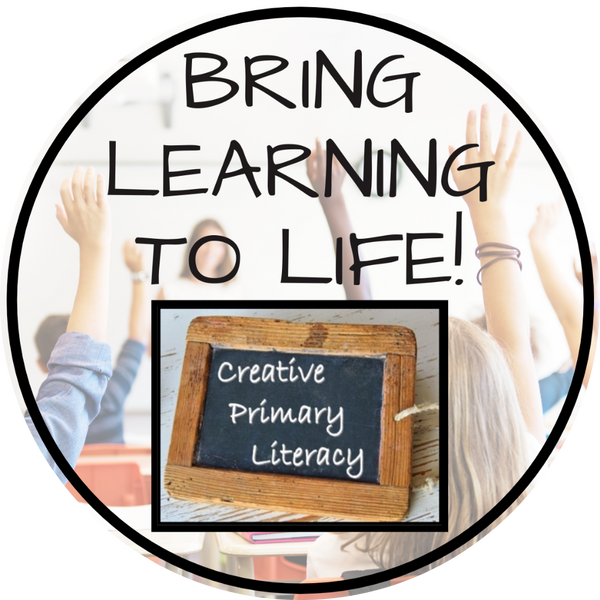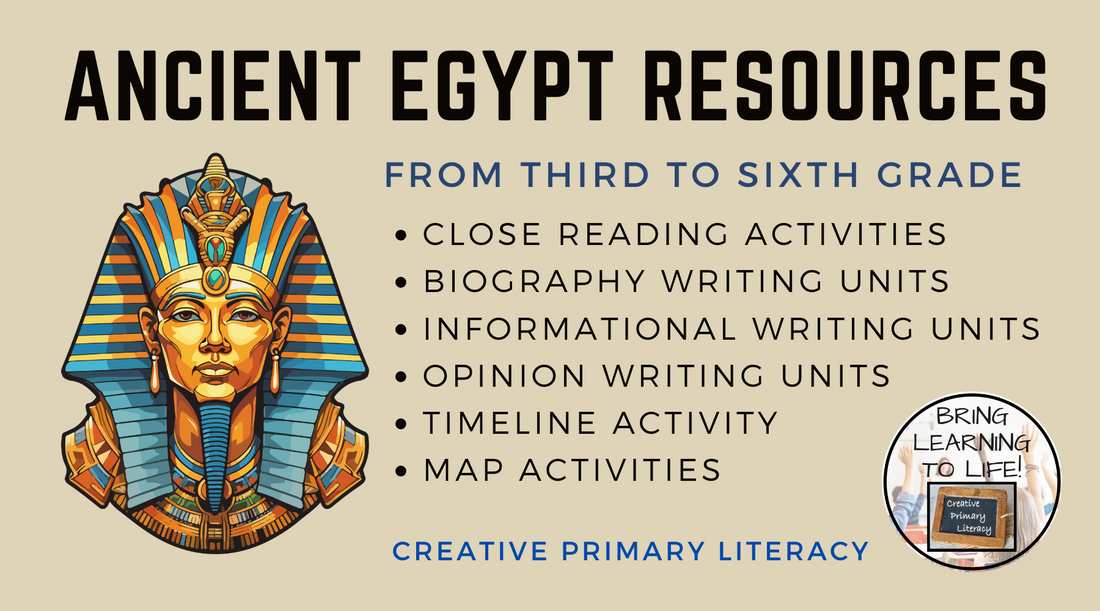Ancient Egypt is a topic that always captures the students’ imaginations. The historical figures, famous relics and wonders from the past, and the magical myths and legends mean Ancient Egypt can be fun to teach and engrossing to learn about.
I like to start off the unit looking at a complete overview of the period; this allows my students to have a base of knowledge before looking deeper into some of the key figures. For this I use the Ancient Egypt Close Reading Activity. The resources come packed with extension tasks too. Remember, all of the resources are part of the Ancient Egypt Mega Bundle!

After, I use the Ancient Egypt Timeline Activity to create a timeline display of the key events and notable figures from the era. This timeline resource enables students to research the dates of key events before sorting them. My students always love these lessons, and over time have inter-connected timelines of other civilizations from ancient history. This helps them to visualise the overlapping empires from other parts of the world.



Once my students understand the order of key events and have taken note of some of the major figures, I delve deeper into the life of two of the most famous pharaohs from Ancient Egypt, Cleopatra and Tutankhamun. I usually split the class into two – one half to look at Cleopatra and the other half to look at Tutankhamun. At first I usually flip the classroom and set the comprehension questions in the close reading activities as homework, before moving on to the biography writing units in school. These units work well as paired activities with students sorting facts into paragraphs before writing up their work.


Afterwards, we look at two other powerful pharaohs in Ramesses II and Thutmose III. Using the resources available in the close reading activities, I use the informational texts and crossword puzzles, and allow my students to work together in table groups to complete both puzzles. If they have time I also introduce the same puzzles for Cleopatra and Tutankhamun. It is astonishing how much they actually learn from these activities, as the students need to delve into the texts to find the answers.


Time for another writing activity – an opinion text discussing which pharaoh was the most powerful and influential in Ancient Egypt. By this time the children are generally very knowledgable about the key figures but I use the opinion writing unit as a guide, especially for some of the lower and middle ability students. After the students have researched the figures for a short time, I use the first lesson as a debate, with the class being split into four, each fourth arguing the side of one of the pharaohs. From the second lesson, I again use the unit as it has some great templates along with the informational texts that allow students to work independently.

To finish the unit, I allow my students to work with partners and complete their final writing assignment. This time I use the Ancient Egypt Informational Writing Unit. In this unit, the students have to sort facts before writing these up into paragraphs, and then completing a final copy on the template provided in the unit.


At the end of the unit my students have completed five close reading activities, four writing units and a timeline research activity. All the activities above are available individually or are part of the Ancient Egypt Mega Bundle of Activities below. If you have time for one last fun and engaging activity, I recommend an Escape Room activity. There are lots of fun ones on the market but I have a bundle of four about Ancient Egypt, which can also be individually purchased. Some of the resources above are also included in the Emergency sub plans bundle below.



For over 2000 more resources check out Creative Primary Literacy.

